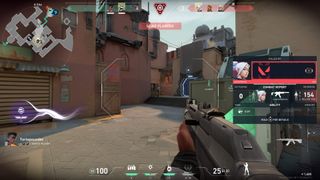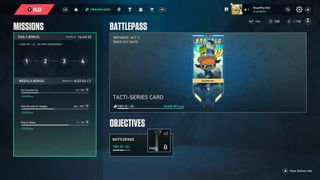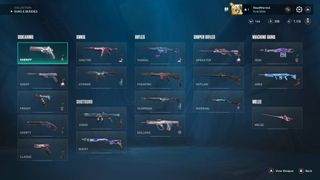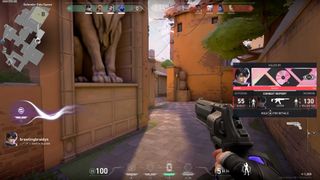I primarily game on my Xbox Series X, as I prefer the comfort of my couch and the familiarity of a controller. Earning achievements doesn’t hurt, either! A few games do tear me away from my console and sit me down at my gaming PC, however, and one of those titles is Valorant. I rotate back and forth between Counter-Strike 2 and Valorant, but lately the latter has occupied my attention far more than the former.
So, imagine my surprise when Riot Games announced that Valorant is coming to consoles. I never believed the tactical, competitive PC shooter would ever make the jump, and I was unbelievably excited to try it. After hours with the Limited Beta of Valorant on Xbox, my shock has elevated to all-new heights — this is a phenomenal console port, and actually succeeds in making Valorant playable and fun on console. It seems that Riot Games thought of everything when considering this port, and it shows.
Here are my initial thoughts on Valorant for Xbox after several hours spent with the Limited Beta.
This preview was made possible with a Limited Beta code provided by Riot Games. The company did not see the contents of this article before publishing.
What is Valorant on Xbox?
Valorant is one of the most popular competitive online first-person shooters on PC, pitting two teams of five players against each other. One team seeks to plant and detonate a bomb, while the other team seeks to defend the sites or defuse said bomb. It’s a unique hero-style shooter with a wide variety of abilities and weapons, and often draws comparisons to Counter-Strike 2 for its precise, tactical gameplay.
Now, it’s coming to Xbox Series X|S and PlayStation 5 consoles. It’s a surprise release for a game that was designed from the ground up for exclusive use with mouse and keyboard, but developer and publisher Riot Games has seemingly invested a lot of resources into refining, optimizing, and changing the game for the console platforms. This includes a fundamentally altered movement and control scheme, updated UI/UX elements, no cross-play between console and Windows PC, and more.
However, Valorant on Xbox will still receive all the same content and updates as the PC version, and it’ll do so at the same time. Players can even sync their progression, cosmetics, and unlocks across platforms using their Riot Account. Valorant on console doesn’t have a defined release date yet, but its Limited Beta kicked off on June 14, 2024.
Valorant Xbox preview: Making it work on consoles
Valorant isn’t like the first-person shooters that are popular on consoles or with a controller. There are no advanced movement mechanics that benefit from a joystick, and there’s no aim assist to help gun control feel more fluid and predictable. Valorant’s gameplay revolves around the precise control afforded by mouse input, and its movement feels right at home on a keyboard.
So, what did Riot do to make Valorant work on console? To begin, Valorant’s UI and UX menus have been completely overhauled to be clearly labeled and easily navigated via a controller, with no frustrating cursor to worry about like with recent Assassin’s Creed games. It also supports Xbox-specific features like Quick Resume, letting you get back into the action quicker without annoying audio bugs or connection issues.
Get a kill in a match, and you’ll realize you can actually earn Xbox achievements, with a good healthy mix between basic objectives that you can quickly earn and challenges that’ll require great skill or dozens of hours of play. Valorant on Xbox fully supports Xbox Parties and Party Chat, with your Xbox friends appearing in-game with no issues. Xbox game and party invites work flawlessly, and it’s easy to stay in a lobby with your friends. If you have Valorant friends on PlayStation, you can find them through their Riot account, too.
Dive into settings, and you’ll find plenty of easily understandable options to fine-tune your controls, crosshair, audio, and more. By all accounts, Valorant feels like a native Xbox game, with none of the holdovers I expected from the PC version. This is a thorough, thoughtfully designed port that takes advantage of the platform and controller input. When you play the game, you continue to see this.
Valorant looks and feels very similarly to how it does on PC, but with some fundamental tweaks to the controls. For one, the traditional aim-down-sights (ADS) you’d expect in other shooters like Call of Duty is now a Focus Mode, which behaves similarly to Valorant’s standard hip fire (which is far more accurate at a standstill than other shooters). This drastically lowers your sensitivity to allow for precise aim, and you can quickly release Focus Mode at any time to regain your movement speed and spraying power.
You can still ADS when needed, but that’s less common in Valorant than you’d think. This is the single biggest change, and it’s the reason that there is no cross-play between Valorant on consoles and Valorant on PC… And there never will be. Riot clearly carefully considered how Valorant’s gameplay would need to be adjusted for controllers, and the Focus Mode on top of other controller-specific refinements means Valorant on console is quite simply a different game than on PC — but it’s still instantly familiar as Valorant.
Valorant Xbox preview: A unique shooter experience
As I said before, Valorant is unlike any other first-person shooter on console, despite being another in a long line of 5v5 hero shooters. The need for keen game sense, solid team work, and smart use of abilities is all here, but Valorant stands out because of its movement and gunplay mechanics. Even translated to a controller, it retains its signature feel.
I played a lot of Swiftplay matches, which are shortened versions of Valorant’s traditional game mode, and I made several observations. One, Riot was right to fully separate console and PC players, as the skill ceiling for console players is quite simply going to be a lot lower than on PC; in other words, if two players of comparable skill were to go up against each other on opposite platforms, the PC player would dominate 9 out of 10 encounters.
Since everyone is on the same playing field, however, this ultimately doesn’t matter much. Valorant matches on console largely play out identically to PC, although it took me a while to become used to the controls. Hundreds of hours in Valorant on PC may make adjusting to the console version difficult, but once you get the hang of it, Valorant feels great.
The Focus Mode works wonders, letting you keep the freedom of Valorant’s hip fire but lowering the camera sensitivity to fine-tune your aim. It’s instantaneous and feels natural after only a few minutes; I could argue that the sensitivity may be lowered a little too much, though, so I hope that Riot gives us an option to tweak this with the full release.
A word of advice if you’re new to Valorant — break your tendency to strafe while firing, like is common in other shooters. Accuracy deteriorates rapidly when you’re moving in Valorant, which is another reason Focus Mode is so important. It forces you to slow down, giving you an edge in confrontations.
My only concern with the console version of Valorant is one that’s difficult to control: communication. Text communication is obviously extremely hard to pull off on consoles, and voice communication basically being an open mic (unless you rebind one of your precious few controls) means a lot of players are liable to simply not use it at all. For most matches, it seems you’ll be relying on the in-game ping and communication wheel, which can take some time to acclimate to.
Valorant Xbox preview: This is an exciting start
When I wrote about Valorant on Xbox the first time, I immediately covered much of what made me excited about the console port. Riot Games promised it had put a lot of work into UI, UX, and control optimization for the controller; now that I’ve played the game, I know the studio was telling the truth. Riot also promised that there was no cross-play between console and PC, but full cross-play between Xbox and PlayStation; now that I’ve played, I know that everyone is on the same playing field.
Riot promised that players would be able to sync their accounts across platforms; when I first played Valorant on Xbox, I was immediately and automatically signed in to my Riot Account with no login screen, and I instantly had access to all my weapon skins, my Battle Pass progress, and everything else attached to my account. Riot promised that Valorant players across all platforms would get all patches, content updates, and seasonal updates simultaneously; that’s a bold promise, but I’ve seen nothing to suggest this won’t be the case.
Yes, even the Xbox Game Pass perks are here with absolutely no extra work. If you’re a Game Pass subscriber, you’ll immediately have access to all Agents and score a 20% XP boost for the Battle Pass.
The reveal of Valorant on Xbox and PlayStation was exciting because it seemed like Riot Games was genuinely committed to doing everything right for the console port. Even during the Limited Beta, I’ve already seen just how much work has gone into this. Valorant on my Xbox Series X runs at a rock solid 60 FPS, and I encountered fewer bugs and issues than I expected. This is already a polished port, and I’m sure Riot is actively taking in feedback to make it even better.
There’s still more that can be done to refine the menus and controls, there are some bugs to be fixed, and I want a few more options to customize your gaming experience, but I’m already more than happy with how Valorant on Xbox is. Valorant is quickly shaping up to be one of the best Xbox games for competitive shooter fans. If you want to join the Limited Beta on Xbox Series X|S, you can still sign up on the Valorant website.










